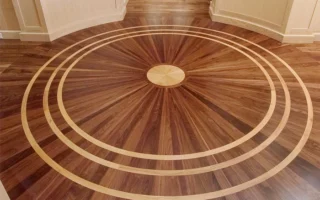Coving is a crucial element in flooring installation that often goes unnoticed. By incorporating coving into your flooring project, you not only enhance the aesthetics of your space but also protect your walls from potential damage caused by moisture and impacts. You are installing hardwood, laminate, vinyl, or tile flooring, which serves as a finishing touch that elevates the room’s overall look.
Choose the right type of coving based on your flooring material and ensure proper installation to reap all its benefits. By following the steps for installing coving correctly and avoiding common mistakes, you can maintain its integrity and prolong its lifespan.
Incorporating coving into your flooring installation process may seem like an additional step, but it is a small detail that can make a significant difference in the long run.
Different types of flooring and their potential impact on walls

When it comes to choosing flooring for your home, there are various options available that can impact the walls differently. Hardwood floors exude elegance but may result in scratches or dents on the baseboards over time. Laminate flooring is durable and easy to clean but might cause moisture issues if improperly sealed.
Carpeting provides warmth and comfort but can attract dust and dirt particles along the edges where they meet the wall. Tile flooring offers versatility and water resistance, yet installing it without coving could leave gaps susceptible to mould growth.
Vinyl flooring is cost-effective and resilient, though its installation may require extra care near walls to prevent buckling or lifting. Each type of flooring has unique characteristics that should be considered when selecting coving materials for a seamless transition between floor and wall surfaces.
The benefits of using coving during flooring installation
Regarding flooring installation, coving plays a crucial role in protecting your walls. It acts as a barrier between the floor and the wall, preventing moisture and dirt from seeping into the corners. This helps maintain the integrity of both your flooring and walls over time.
Using coving also adds a touch of elegance to your room by creating a clean and finished look. It can enhance your space’s overall aesthetic appeal while hiding imperfections at the edges where the floor meets the wall.
Coving is practical in terms of maintenance as well. It makes cleaning easier by reducing dust buildup in hard-to-reach areas. By sealing off those gaps, you also minimise potential pest entry points in your home.
Coving supports your flooring materials, ensuring they stay securely in place for longer. This added stability can extend the lifespan of your floors and prevent unnecessary wear and tear over time.
Steps for installing coving with flooring

When installing coving with flooring, there are a few essential steps for a seamless finish. First, ensure the walls are clean and dry before beginning installation. Remove any existing coving or trim that may interfere with the new installation.
Next, measure and cut your coving pieces at precise angles to fit seamlessly along the walls. Use a mitre box or saw for accurate cuts. Apply adhesive to the back of each piece and press firmly against the wall, ensuring they are level and secure.
Once all coving pieces are in place, fill gaps or joints with caulk for a smooth transition between the coving and walls. Allow ample time for the adhesive and caulk to dry completely before installing your chosen flooring.
Common mistakes to avoid when installing coving with flooring
When installing coving along with your flooring, it’s essential to avoid common mistakes that could impact the overall finish of your project. One mistake to avoid is not properly preparing the walls before installing the coving. It is important to keep the surface clean and free of debris and dust.
Another common error is rushing through the installation process. Take time to measure and cut the coving accurately for a seamless fit against the walls. Neglecting a suitable adhesive can lead to instability and gaps in your coving.
Pay attention to detail when joining each piece of coving together is crucial, as uneven joints can detract from the room’s aesthetics. Allowing sufficient drying time for the adhesive can result in dislodged or misaligned coving pieces.
Tips for maintaining coving and prolonging its lifespan
There are a few key tips to keep in mind when it comes to maintaining coving and ensuring its longevity. First and foremost, regularly inspect the coving for any signs of damage or wear. This includes checking for cracks, chips, or discolouration needing attention.
Dust and clean the coving periodically to prevent dirt buildup and maintain its aesthetic appeal. A gentle wipe down with a damp cloth can go a long way in keeping your coving looking fresh and clean.
Avoid using harsh chemicals or abrasive cleaners when cleaning coving as they can damage the material over time. Stick to mild soap and water solutions for gentle yet effective maintenance.
If you notice any issues with the coving, such as loose edges or gaps between the wall and ceiling, address them promptly to prevent further damage. Quick repairs can help prolong the lifespan of your coving and ensure its structural integrity.
Regularly touch up painted or finished coving to maintain its appearance and protect it from wear and tear. Keeping up with minor touch-ups can help extend the life of your coving and keep it looking new for years to come.




